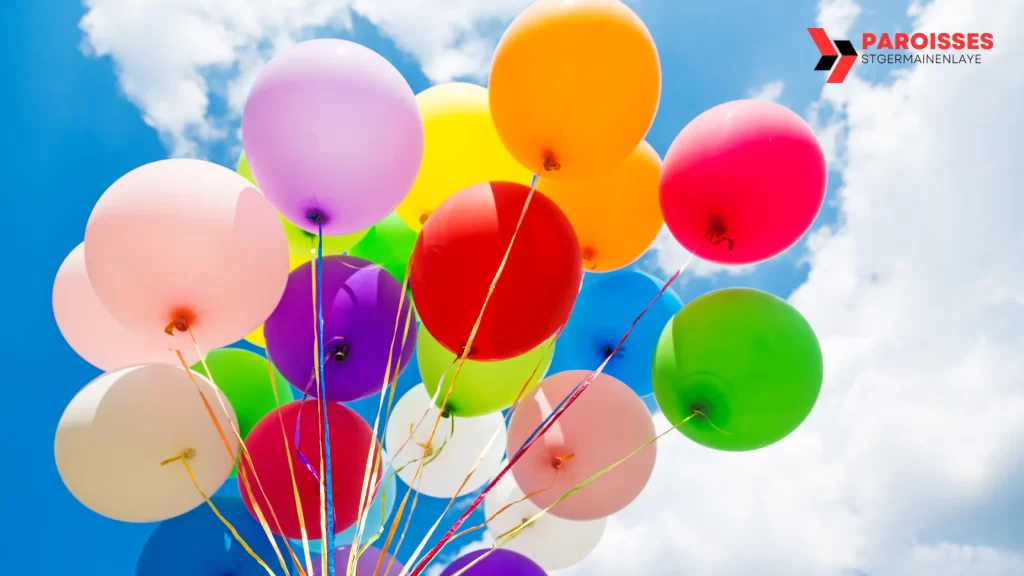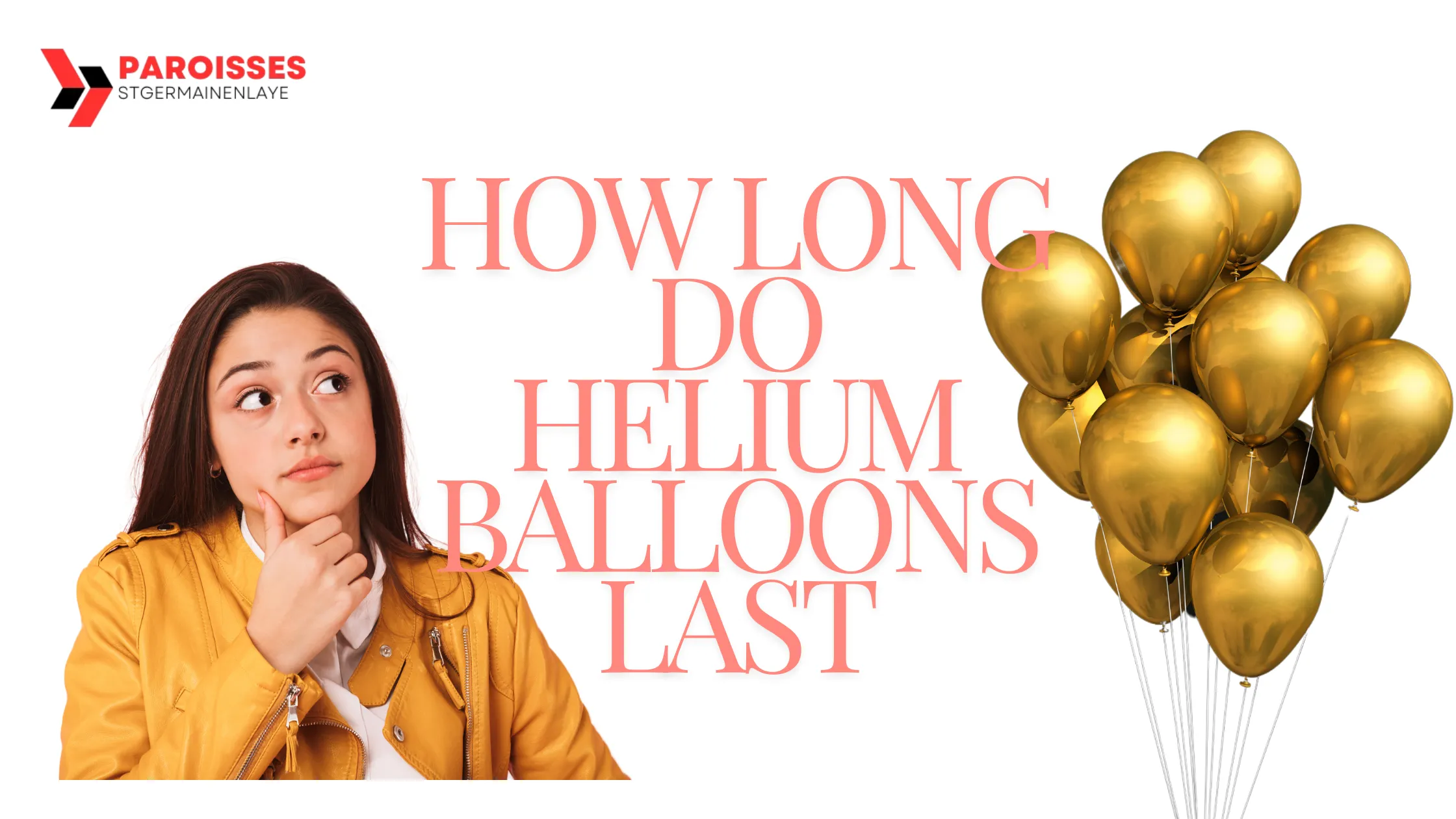Table of Contents
A common option for festivals, celebrations, and parties are helium balloons. Their vibrant colors and ability to float effortlessly in the air bring joy to any occasion. But have you ever wondered how long do helium balloons last? The answer may surprise you! With the right care, you can make your helium balloons last longer and keep your celebrations looking bright and festive. Let’s dive into how you can extend the life of helium balloons and ensure they stay floating for as long as possible.
What Affects How Long Helium Balloons Last?

The lifespan of helium balloons depends on several factors. By understanding what causes balloons to deflate or lose their lift, you can take steps to make them last longer. Let’s explore the key elements that impact how long helium balloons stay afloat.
1. Balloon Material
Helium balloons come in two main types: latex and foil (or Mylar). Latex balloons are made from natural rubber, while foil balloons are made from a thin layer of metallic foil. The material plays a big role in how long the balloons last.
- Latex balloons: These balloons are porous, meaning helium escapes faster. Latex helium balloons typically last 8-12 hours. However, with proper care, you can extend their lifespan up to 24 hours or more.
- Foil balloons: Foil balloons last much longer. They can float for 3-5 days or even up to a week or more. The non-porous material helps trap the helium inside for a longer time.
Knowing the type of balloon you’re using will help you manage your expectations for how long they will last.
2. Size of the Balloon
The size of the balloon also plays a crucial role. Larger balloons hold more helium, which allows them to float for longer. For example, a large 24-inch latex balloon can last up to 2-3 days, whereas smaller balloons may only last a few hours. Foil balloons, regardless of size, tend to have a longer lifespan due to their durable material.
If you’re looking to have helium balloons last all day, consider opting for larger sizes or foil balloons.
3. Temperature and Environment
Temperature and weather conditions can drastically affect how long helium balloons last. If you’re hosting an outdoor event, it’s essential to know that both heat and cold can impact the balloons.
- Heat: High temperatures cause helium to expand, which can lead to the balloon popping or losing helium faster. Helium molecules move more quickly in the heat, which allows them to escape through the balloon’s material. If you’re in a hot environment, try to keep your balloons in the shade or indoors.
- Cold: In cold weather, helium contracts, causing the balloon to shrink and lose some of its lift. While the balloons might not pop, they will appear deflated until they warm up again. However, cold temperatures generally don’t cause long-term damage, and the balloons will return to normal as soon as they’re back in a warmer space.
For the best results, keep your helium balloons at room temperature, away from direct sunlight or cold drafts.
Also Read: How Long Does It Take to Paint a Room? Discover the Shocking Truth
Essential Tips to Make Helium Balloons Last Longer

Now that you know the factors affecting how long helium balloons last, let’s explore some practical tips to help you extend their lifespan.
1. Use Hi-Float for Latex Balloons
One of the best ways to extend the life of latex helium balloons is to use a product called Hi-Float. Hi-Float is a liquid solution that coats the inside of the balloon and creates a barrier, preventing helium from escaping too quickly. When applied correctly, Hi-Float can make latex balloons last up to five times longer, turning an 8-hour balloon into one that lasts several days.
2. Store Balloons in a Cool, Dry Place
As mentioned earlier, temperature plays a significant role in how long helium balloons last. To keep your balloons looking fresh, store them in a cool, dry place. Avoid areas that are too hot, such as near windows or in a car on a sunny day. If you’re hosting an outdoor event, try to keep balloons in the shade when not in use.
3. Inflate Balloons Right Before Your Event
Timing is everything when it comes to helium balloons. To ensure they’re floating at their best, try to inflate your balloons as close to your event as possible. If you’re using latex balloons, aim to fill them within 6-8 hours of your celebration. Foil balloons, on the other hand, can be inflated a day or two in advance without losing much lift.
4. Tie Balloons Tightly
It may seem obvious, but tying the neck of the balloon tightly is essential for keeping the helium inside. Ensure that the knot is secure and, if needed, use a ribbon or string to reinforce it. The tighter the seal, the longer your balloon will last.
5. Avoid Overinflating Balloons
While it’s tempting to inflate balloons to their maximum size, overinflating can cause them to burst, especially in hot environments. To prevent this, fill your balloons to about 90% capacity. This will give them enough room to expand naturally without popping.
6. Use a Balloon Net for Large Displays
If you’re creating a large balloon display or arch, consider using a balloon net. A net helps keep the balloons in place and prevents them from drifting away. It also reduces the risk of popping or deflating due to environmental factors.
Also Read: Who Is Diana Nyad Husband? The Inspiring Story You Didn’t Know
How Long Do Helium Balloons Last Indoors vs. Outdoors?

The environment plays a massive role in how long helium balloons last. Indoor and outdoor settings offer different challenges when it comes to balloon longevity.
1. Indoors
Helium balloons last longer indoors because they’re protected from the elements. In a temperature-controlled room, latex balloons can float for up to 24 hours, and foil balloons can last several days or even weeks. Keeping them away from sharp objects and direct sunlight will further extend their lifespan.
2. Outdoors
Outdoors and helium balloons face additional challenges such as wind, heat, and humidity. Latex balloons may only last a few hours in extreme conditions, while foil balloons might fare better but could still lose helium faster due to the heat. If you’re hosting an outdoor event, consider inflating your balloons on-site to minimize their exposure to the elements.
Also Read: How Long Do Helium Balloons Last? Essential Tips!
FAQs: Common Questions About Helium Balloons
Here are some frequently asked questions about helium balloons that might help you plan your next event.
Q. How long do helium balloons last with Hi-Float?
A. With Hi-Float, latex balloons can last anywhere from 2-5 days, depending on the conditions. It’s an excellent option for anyone looking to extend the life of their balloons.
Q. Can I refill helium balloons?
A. Foil balloons can often be refilled, especially if they have a self-sealing valve. However, latex balloons cannot be refilled once deflated, as they lose elasticity after the first inflation.
Q. Do helium balloons deflate overnight?
A. Latex balloons filled with helium may deflate overnight, especially without Hi-Float. Foil balloons typically last longer and can maintain their float for several days, even weeks.
Q. Why do helium balloons deflate so quickly?
A. Helium molecules are small and can escape through the material of latex balloons. This is why latex balloons deflate more quickly than foil balloons. Temperature and how well the balloon is sealed also affect how fast it deflates.

